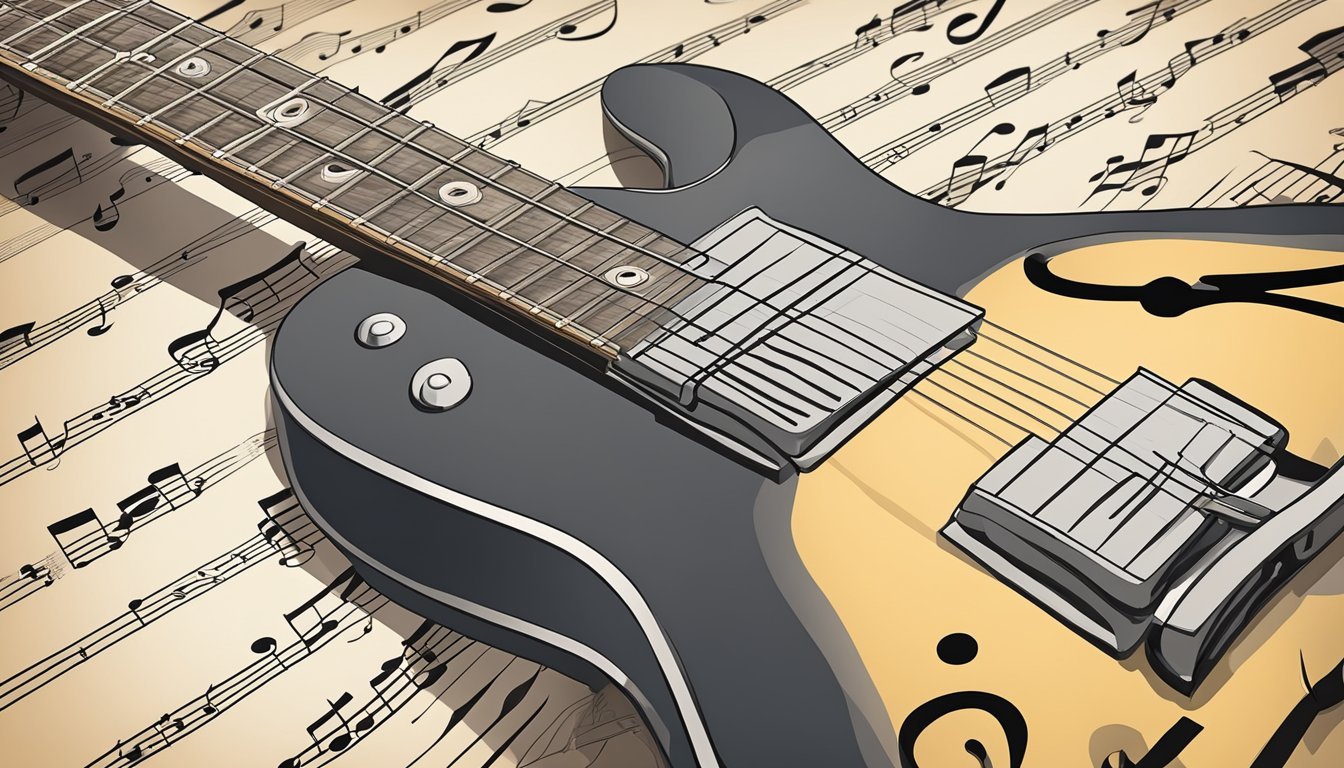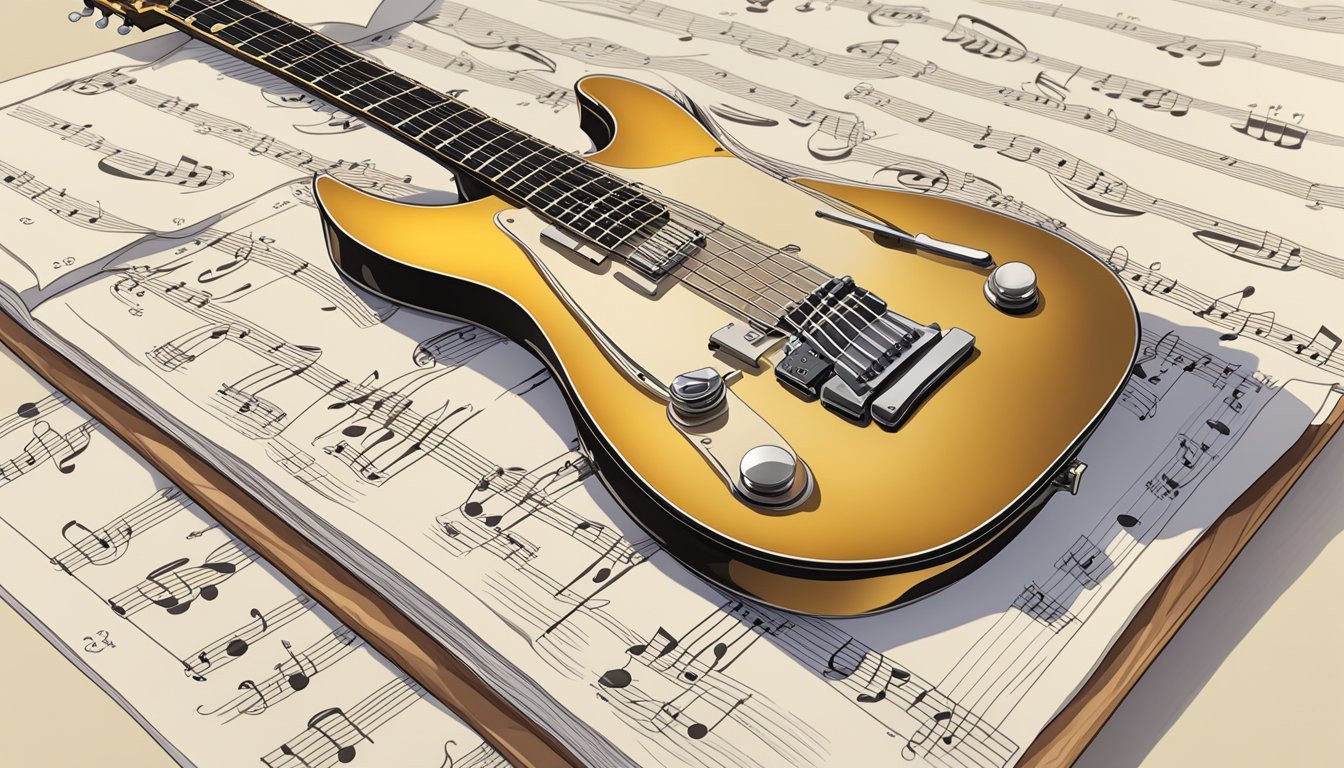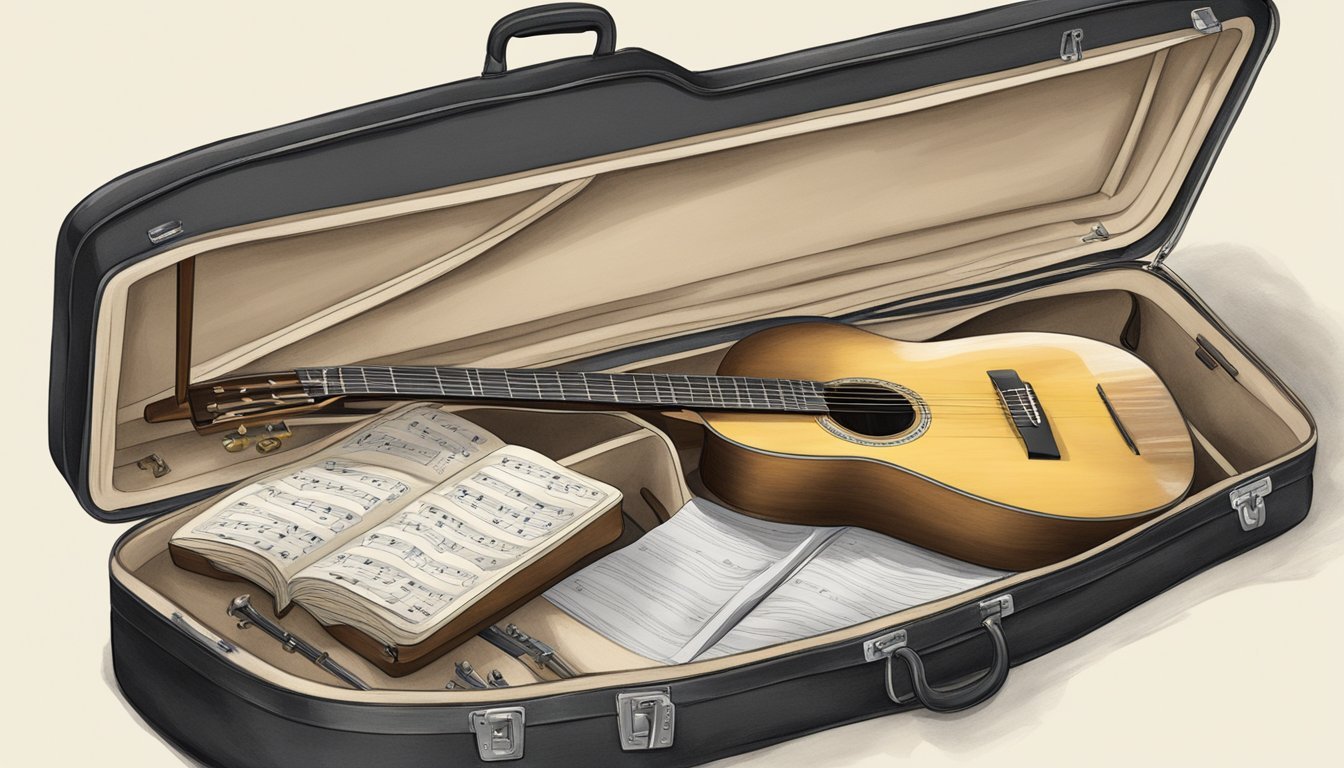Learning how to read notes for guitar can open up a whole new world of music for you.
Understanding guitar notes helps you play your favorite songs and even compose your own music.
Whether you’re a beginner or someone looking to brush up on your skills, gaining this knowledge is essential for your growth as a guitarist.

You don’t have to be overwhelmed by reading guitar sheet music.
It might seem complicated at first, but with some practice and the right approach, you can quickly grasp the basics.
Once you learn how notes work, you’ll find it easier to communicate with other musicians and explore different genres.
So, if you’re ready to take your guitar playing to the next level, let’s dive into the fun part—reading music for guitar.
You’ll discover practical techniques and tips that can help you become more confident in playing and interpreting music.
Key Takeaways
- Learning guitar notes is essential for playing songs and composing.
- Reading guitar sheet music becomes easier with practice.
- Understanding music helps you explore different musical styles.
Getting Started with Guitar Basics

When learning to play the guitar, you first need to understand the fretboard and how music notation works.
Knowing these basics helps you read guitar notes and play your favorite songs.
Understanding the Guitar Fretboard
The guitar fretboard has six strings that represent different musical notes.
In standard tuning, the notes from the lowest string to the highest are E, A, D, G, B, and E. It’s helpful to memorize these open strings first.
Each fret on the guitar represents a half step, while moving two frets up is a whole step.
For example, if you play the first fret on the low E string, you play an F note.
You can note that every fret changes the note.
Use this pattern for learning natural notes.
Remember the phrase, E very G ood B oy D eserves F ood for the notes on the lines of the music staff.
The spaces spell F A C E.
Introduction to Music Notation
Music notation is how you read notes on the staff.
The staff consists of five lines and four spaces.
Each line and space corresponds to a note.
In guitar music, you often see the treble clef, which shows higher notes.
The bass clef represents lower notes.
Notes on the lines of the treble clef are E, G, B, D, and F.
Use the phrase E very G ood B oy D eserves F ood to help remember these.
The spaces in the treble clef spell F A C E.
Understanding these basics sets you up to read and play music more easily.
With practice, you’ll get comfortable with the fretboard and notation.
Reading Guitar Music
Learning to read guitar music can open up a whole new world of playing.
By familiarizing yourself with guitar tabs and sheet music, you can better understand rhythms and note values, leading to more enjoyable playing.
Decoding Guitar Tabs and Sheet Music
When reading guitar tabs, you see six lines that represent the six strings of your guitar.
The numbers on these lines tell you which fret to press.
For example, a “0” means play the string open, while “3” means press down on the third fret.
Guitar tabs are straightforward and great for beginners, but it’s also useful to know how to read standard sheet music.
This music notation uses a staff made up of five lines where notes indicate pitch.
Many guitarists use the treble clef.
Understanding sharps and flats, as well as key signatures, adds more depth to what you play.
Mastering Rhythms and Beats
Rhythm is essential in music.
Each note has a specific duration, which affects how you play.
Common note values include whole notes, half notes, quarter notes, and eighth notes.
Knowing these helps you keep time.
Time signatures, like 4/4 or 3/4, tell you how many beats are in each measure.
You’ll also encounter rhythmic patterns—repeating sequences that create a groove.
To master rhythm, practice counting while playing.
Getting familiar with dynamics and accidentals can also enhance your playing.
All these elements, combined with basic music theory, make you a versatile guitarist.
Techniques and Expressions

Playing guitar isn’t just about hitting the right notes; it’s also about how you express those notes.
Techniques and expressions add character and emotion to your music.
Understanding how to use these techniques will elevate your playing and help you connect with your audience.
Incorporating Guitar Chords and Melody
Combining guitar chords with melody is essential for creating full, rich sounds.
You can use chord voicings to explore different textures.
For instance, try playing a C major chord and then add a melody note from your scale.
Using slides and pull-offs can create smooth transitions between notes.
For example, slide from the 5th fret to the 7th while holding a chord to give it more depth.
Also, dynamic strumming patterns will help you emphasize certain parts of the melody, making your playing more engaging.
Playing with Feeling
Expressing emotion is vital to making your music memorable.
Use techniques like bends and vibrato to add nuance.
For example, bend a note slightly to make it sound more expressive or add vibrato by oscillating the pitch of the note.
Don’t forget about palm muting during softer sections.
It gives a rhythmic pulse and creates a contrast when combined with open chords.
Remember to experiment with improvisation; play freely over your chord progressions to discover new sounds and expressions.
This approach deepens your understanding of music theory and enhances your emotional connection to the music.
Exploring Genres and Advanced Concepts

Understanding different music styles and honing your skills can greatly enhance your guitar playing.
By exploring genres, you can learn how to apply various techniques effectively.
Creating a solid practice routine helps you stay consistent and improve your musicianship.
Navigating Different Music Styles
Diving into various genres broadens your musical horizons.
Each style, whether it’s classical, jazz, or traditional, offers unique techniques.
For instance, classical guitar often involves reading sheet music and mastering chord diagrams.
Jazz emphasizes improvisation and understanding guitar scales.
When you play jazz, recognize the importance of chord charts and fretboard knowledge.
They will help you explore complex chords and progressions.
Traditional music may rely more on guitar tablature, allowing for easier learning.
Experimenting with different genres also exposes you to new rhythms and patterns.
Building a Solid Practice Routine
A consistent practice routine is key to developing your guitar skills.
Start by setting clear goals, like mastering the C major scale or learning to read musical notation.
Dedicate time to both technique and song practice.
Consider breaking your practice into sections.
For example, you can spend 10 minutes on chord boxes or reading guitar sheet music, followed by 15 minutes on scales.
Don’t forget to include rest and octaves in your exercises.
Incorporating these elements helps improve your understanding of musical staff and reading skills.
Make sure to track your progress to stay motivated and adjust your routine as needed.
Frequently Asked Questions
Many people have questions when they start learning how to read notes on the guitar.
Here are some answers to help you get more comfortable with the process.
How do I learn to read guitar tabs?
You can start by practicing regularly with simple songs.
Look for tabs online and try playing along.
The more you practice, the easier it will get to recognize patterns.
What’s the easiest way for a beginner to understand guitar notes?
Start with the open strings, which are E, A, D, G, B, and e. Familiarize yourself with these notes and their locations on the fretboard.
Using chord charts can also help you visualize where notes are and how they fit together.
Can you explain how to read sheet music for guitar?
Sheet music uses a staff that shows notes for different pitches.
Each line and space represents a different note.
To read it, you match the notes on the staff to their corresponding positions on the guitar.
What are some tips for figuring out guitar chords?
Start with basic chords like C, G, and D. Practice switching between them smoothly.
Use visual aids like chord charts to help you see where to place your fingers.
What’s the best method to start reading guitar notes for songs?
Choose simple songs that you enjoy.
Look for tabs or sheet music for those songs and practice regularly.
Listening to the song while you play can help you get the rhythm and feel right.
How can I quickly learn to read music notes for playing guitar?
Learning a few notes at a time is a good way to start.
Practice identifying them on the staff and finding their positions on the guitar.
Consistent practice and using flashcards or apps can speed up your learning.

